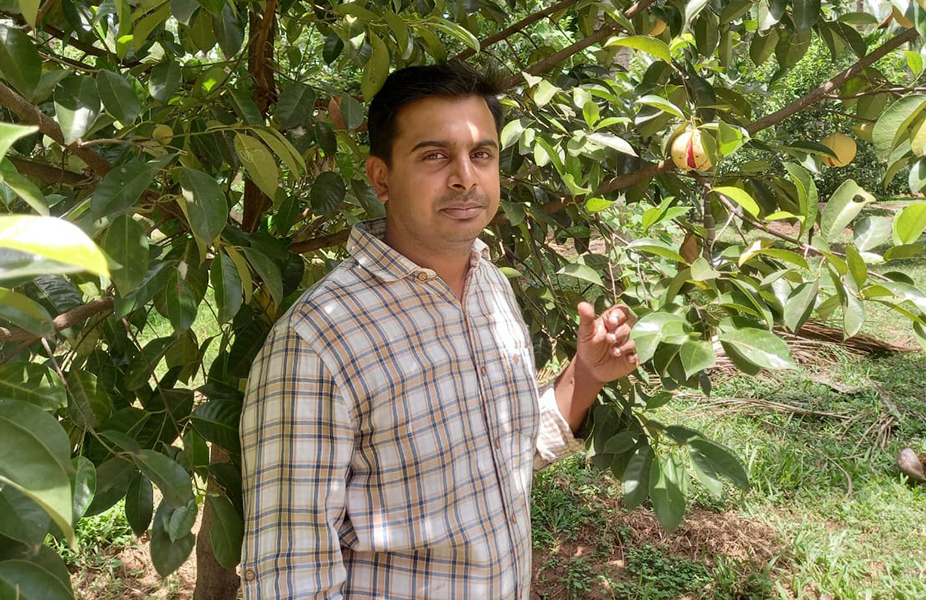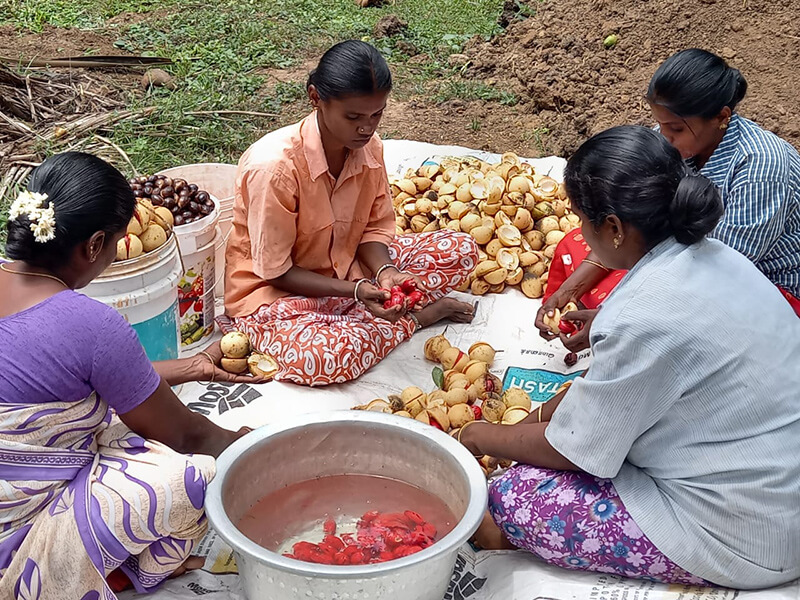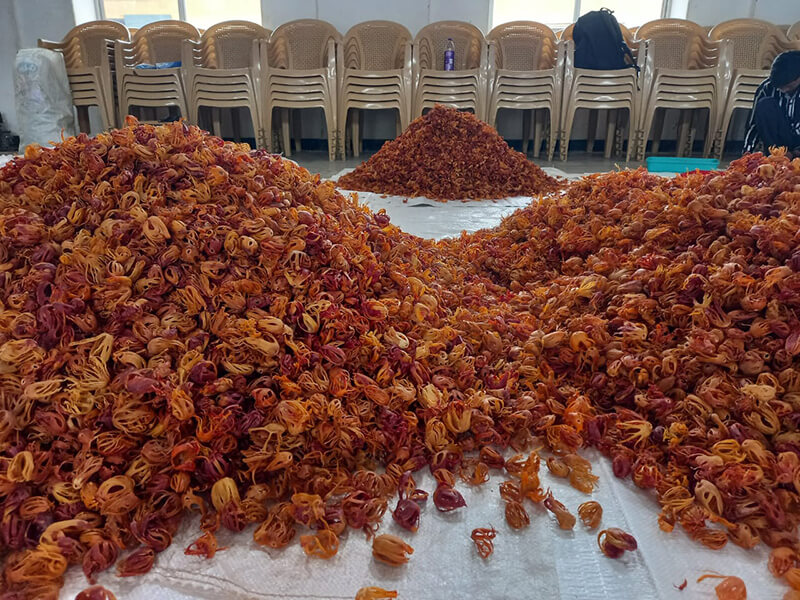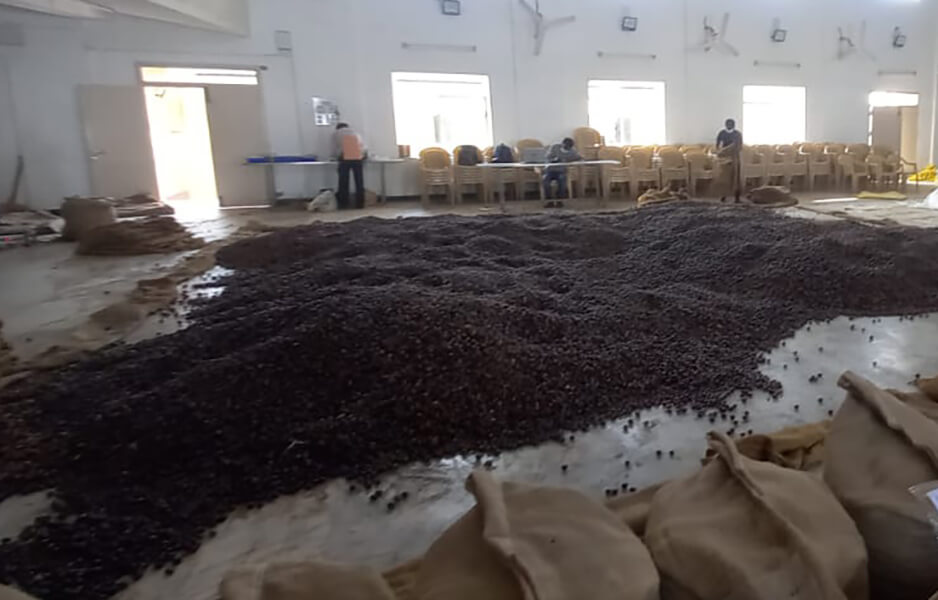Nutmeg farmers in Pollachi, Tamil Nadu, are profiting from the power of collectivization.
 TR Vivek
TR Vivek 
Nutmeg farmers in Pollachi, Tamil Nadu, are profiting from the power of collectivization.
 TR Vivek
TR Vivek
There are few places in Tamil Nadu more fetching and fertile than the region around Pollachi, a town 40km to the south of Coimbatore.
Girded by the Western Ghats, rivers that flow east from its peaks, amply fed by the southwest monsoon, and tropical forests, Pollachi’s soil can grow pretty much anything. It allows farmers to experiment with vanilla and cocoa to latch on to global commodity boom cycles. The region’s Eden-image was burnished by countless Tamil films that were shot here in the 1990s, and long-term prosperity built around coconut, especially tender coconut.
In recent years, nutmeg has considerably spiced up farmer incomes, thanks to the efforts of Ranjit Kumar.

Ranjit Kumar, 36, is a mechanical engineer who won the Chevening scholarship to pursue a postgraduate degree in nanotechnology at Cambridge University. When his father was diagnosed with kidney failure, he had no option but to chuck up a flourishing career in engineering design in 2016 and return to Kottur, a village 15km from Pollachi to manage the 60-acre family holding of primarily coconut plantation. While at Cambridge, Ranjit ensured diversification into nutmeg following a few other farmers in the region. It’s an ideal accompaniment to coconut in these parts. Nutmeg loves the shade of coconut.

Flavour bomb
The nutmeg fruit is the size of a table tennis ball and produces two spices—nutmeg and mace. It has a smooth, pale yellow exterior when ripe, somewhat similar to the apricot or plum. Inside the fleshy and aromatic fruit, the seed is clasped in a crimson filigree called mace, that when dried, resembles flower petals. Mace has a more delicate fragrance than the nutmeg. Enclosed within the hard kernel is the actual nutmeg, an oval-shaped marble that looks like the betelnut or supari. Both mace and nutmeg are prized spices. Besides food, the oil extracted from nutmeg is used in the perfume and pharmaceutical industries.

Trees can last up to 100 years and need little maintenance. It is naturally resistant to pests and needs only farmyard manure. Chemical fertilizers eat into the aroma of the spice.
Pollachi is a tiny nutmeg growing region compared to Kerala that accounts for more than 90% of the 15,000 tonnes India produces. Being a secondary production market, the nearly 150 nutmeg farmers in Pollachi with smaller output were at the mercy of a cartel of four traders.
“The farmers didn’t know much about market trends. Traders would tell us that our quality was poor and we took whatever money they offered. If you look at the organized services or manufacturing industry, the vendor and buyer are both informed parties. In agriculture, the farmer who is the vendor is in the dark,” says Ranjit.
In 2019, Ranjit started the Pollachi Nutmeg Farmer Producer Company bringing together 110 local nutmeg farmers.
A farmer producer company or FPC is a social enterprise that’s a hybrid between a cooperative, such as Amul, and a private limited company. An FPC can be formed when ten or more farmers in a region band together. But it must be owned and managed by its member-farmers.
Creating 10,000 FPCs across the country is a keystone in the government’s plans to increase chronically low small farmer incomes. To develop the FPC movement in the country, the government has made a budgetary allocation of Rs 6,865 crore besides a raft of other schemes to increase the access to money and markets for such companies. The power of collectivization through FPCs helps farmers negotiate better prices both when buying inputs like seeds and fertilizers or selling their produce to traders.
Understanding value
Instead of farmers selling small lots, the FPC pools more than 40 tonnes of nutmeg and two tonnes of mace from the member farmers across 50 villages.
Nutmegs are sorted by the farmers and graded in three quality tiers. All the produce is brought to a marriage hall in Pollachi and sold within ten days. Not only is their bargaining power better, the FPC can focus on marketing and attracting more buyers. As a result, farmer incomes have gone up almost 50% and the FPC has a turnover of Rs 2.5 crore.
A nutmeg tree starts yielding in about five years. A fully grown tree in Pollachi produces 400-450 nutmegs a year on average compared to a 1000 in Kerala. But in a wetter Kerala, the nutmegs are more susceptible to fungus.
Mace fetches a better price when it dries out turning yellow from scarlet while retaining its flower-like shape. “Due to the weather in Kerala, this process takes longer. Also, the nutmegs here have better flavour because the plantations are not as dense as in Kerala,” says Ranjit. A better understanding of the market and the value of their own produce is helping farmers convince the traders to offer a premium.

Farmers make up to Rs 180,000 a year in profits with 50 trees as an intercrop with coconut. Last season, one of the farmers in the FPC sold nutmegs worth more than Rs 20 lakh from his four acres. A kilo of nutmeg during peak season sells for more than Rs 450. When farmers sell small lots to traders, the average price can be as low as Rs 275.
Ranjit wants to replicate the success of nutmeg in coconut as well. That’s the big but elusive prize. It was easy to unite farmers through nutmeg because it is a high value commodity. The biggest crop in Pollachi is tender coconut—so big that most farmers have now lost the skill to grow anything else. In summers, the price of a nut goes up to Rs 35 and in winters farmers barely get Rs 10. “Our next target is to find a way to create a supply chain for tender coconut that keeps farmers profitable year-round. If you are not working collectively as farmers, you are moving in the wrong direction,” he says.